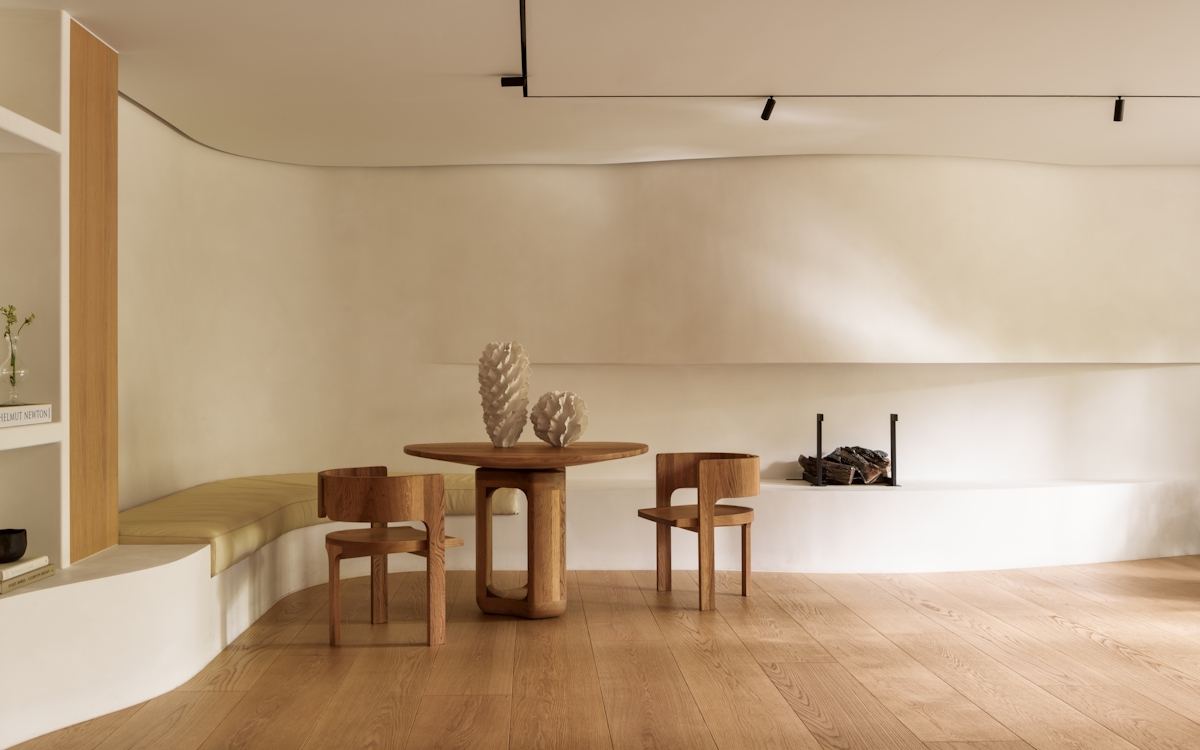There are few interior design styles like that of Memphis Group. Instantly recognisable and yet misunderstood by so many, the postmodern style is one characterised by colour-saturated, blocky components arranged into seemingly impossible configurations in a complete rethink of the concept of furniture. An ultra-modern bed fit for a top-floor penthouse? How about a monochromatic striped boxing ring instead. A table with four legs? Try no legs at all. (At least not typical ones.) Symmetrical design? How quaint.

Celebrating the Style Revolution of Memphis Design
Striking a brazen one-style battle against minimalism since 1981

Memphis design has been met with both disdain (there’s always that “shotgun wedding between Bauhaus and Fisher Price” reference) and fanfare. It has been extolled by the world’s creative geniuses yet, still, those not in the know might not be able to put a name to it. But it seems that now more than ever, the style might get the long-delayed industry praise it deserves.
For one, we covered it in our Maison & Objet trend round up back in January. And, two, last year, the Financial Times’ How To Spend It claimed that now is the time to collect Memphis Design. This is markedly less skeptical than the news outlets which declared that “Memphis is having a moment—again” just a few years ago. “Again” suggests that the style comes and goes, that its popularity and, therefore, its influence waxes and wanes. But, for those who know, this kooky style never truly goes away.
It has made an indelible mark on the subconscious of designers around the world. But how? It only lasted around 8 years after all. Pure design revolution, that’s how. So, in this moment of revolution, we pay homage to the style revolution of Memphis.
A Momentous Beginning
The founding of the Memphis Group has become the stuff of design folklore by this point, almost 40 years after it took place; the story so iconic amongst students of design and so romanticised by design followers that one can’t help but wish to have been a fly on the wall that 11th December back in 1980.
It goes like this. In the small Milan living room of Italian designer Ettore Sottsass, a group of young designers and architects convene to the sound of Bob Dylan’s Stuck Inside of Mobile with the Memphis Blues Again on repeat. (The author is indeed listening to the very same over and over again in an attempt to tap into the writer’s version of method acting.) The song’s lyrics tell of frustration, a yearning for change, a breakout—something the designers were feeling themselves. A name was discovered—inspired by the song and suggested by Sottsass’ wife Barbara Radice—and a style was born.
The eventual co-founders numbered eight: Ettore Sottsass, Martine Bedin, Aldo Cibic, Michele De Lucchi, Nathalie Du Pasquier, George Sowden, Matteo Thun, Marco Zanini. Other notable designers joined thereafter including Andrea Branzi, Michael Graves, Bruno Gregori, Hans Hollein, Arata Isozaki, Terry Jones, Shirō Kuramata, Javier Mariscal, Alessandro Mendini, Paola Navone, Luigi Serafini, Peter Shire and Masanori Umeda.
“There was no goal,” Matteo Thun (who now heads his own architectural and design firm) reveals when asked what his goal was when designing for Memphis. “As with any rebellion that comes from the inside, we were emotionally uploaded. It was power in the present. Product design in the late 1970s was totally frozen. We admired the designers of Bauhaus, but felt constricted by their dogma. That frustration forced us to seek an alternative.”
Peter Shire had a different goal: “To make something of importance and new, and to have a tonne of fun doing it.” And of his fellow Memphis designers, “What a sensational group of people! No back-biting, no interior conflicts. It was a cooperation with a group of people working on the same wavelength; how ideas can expand, and camaraderie and respect germinated transcendence.” He also offered a night of story after story of the Best of Memphis moments for the cost of a mere drink, which seems absolutely worth it.
Less than a year after that initial living room assembly, in 1981, the group launched its first collection at Milan’s Salone del Mobile. “We could not believe that the road in front of the showroom had to be closed after an hour, because so many people were on the street,” he recalls of the night. “We did not intend to shock at all—the opposite!”
But shock they did. Over 2000 design enthusiasts stood waiting, blocking traffic, outside of the gallery. Primary colour palettes, graphic patterns which jazzed up ordinary laminate (the Bacterio print is one of the style’s most well-known), fundamental shapes… The pieces made use of design’s most basic building blocks, playfully jumbled together in a not so basic way—their logic-defying forms speaking to the unaddressed out-of-the-box alternative to clinical Modernist furniture.
Some of the group’s most iconic pieces showed that year: Peter Shire’s Brazil Table whose triangular top and fin-shaped leg reimagined the rules of furniture; Marco Zanini’s tutti frutti Dublin sofa; Martine Bedin’s part-toy, part-light Super table lamp; Masanori Umeda’s Tawaraya Ring bed (seen above); and, of course, Ettore Sottsass’ Carlton bookcase with its branch-like extremities and mottled brightly coloured laminate building blocks.
In fact, the subsequent collections remained largely true to the very first—signal that the founders were committed to the statement they were making to the wider design world through their “new language [which] mixed elegance and kitsch” and, in true Memphis fashion, cared little if you didn’t like it.
And criticism did come. It hasn’t necessarily been an easy ride for the quirky design aesthetic. After that initial celebration in 1981, Memphis design was quite often ridiculed and some might argue that it’s never been a commercial success. Instead it has been seen by many as a fringe style for years, perplexing at best and downright tasteless at worst.
To those critics, I’d say this: the blessing and the curse of Memphis design is that it is so brilliantly freewheeling. With a lack of rules (or at least a disregard for the arbitrary ones), the designers were free to create irrespective of the confines of its design contemporary, Modernism. And people still underestimate it for that. It is seen as childish and rudimentary. (Although Radice assured that “those patterns were not funny. It was totally misunderstood in the sense that it was taken for a joke.”)
But I see in Memphis industry-pushing disobedience and the original conversation piece furniture (much like the Haas Brothers or Gaetano Pesco these days), both of which are the hallmarks of It interiors in 2020.
That said, if committed, radical and industry-pushing characterised the Memphis group, the word for their tenure as a design unit would be ephemeral, which is apparently just how Sottsass envisioned it. (“Every strong idea lasts a very short time”.) The group lasted only around 8 years until 1988. (Ettore Sottsass exited the group three years earlier, in 1985, to focus on other work and to prevent himself from being defined by one style.) Eight years. In the grand scheme, it wasn’t a long time—barely long enough to truly establish as a brand. But do you know of the other phenomenon that only lasted 8 years? The Beatles. (Truly, look it up.) And like The Beatles, Memphis design didn’t need decades for its impact to be felt. Its influence was strong from the off. Even now, vestiges of the style continue to ring through the design world influencing some of the very best.
Dedicated Followers of Memphis
“I have been obsessed with the Italian architect and designer Sottsass and the Memphis Group he found all my life,” revealed Donatella Versace in her review of Phaidon’s Ettore Sottsass and the Poetry of Things. “I love everything about Sottsass's work—it's modern, optimistic, humorous, functional and intelligent. The designs in this book make me feel proud to be Italian.”
And Versace isn’t the only designer to have been taken by the style. Karl Lagerfeld was an early adopter and fan who amassed an expansive collection for his Monaco apartment.He would eventually sell his collection through Sotheby’s in 1991. (David Bowie’s collection, too, was auctioned after his death in 2016 by the same and, let me tell you, it was remarkable to see so many pieces together.) And in 2011, Bill Gaytten paid homage to Memphis design as part of Christian Dior’s Fall 2011 Couture show.
The interior design world, of course, offers some of the style’s most devout admirers. It’s clear that LuxDeco 100 interior designer Kelly Wearstler’s noticeably Maximalist look has definite Memphis references. And interior designers Doherty Design Studio, Daria Zinovatnaya, furniture designer Kaoi Studio (which launched this year with a Sottsass-inspired chair) and multidisciplinary designer Camille Walala continue to find seeds of inspiration in the style in 2020.
The Future of Memphis
So, where are they now? Well, after its 1988 disbandment, the group went their separate ways with some additional collaborations in the intervening years (like Ettore Sottsass, Aldo Cibic, Matteo Thun and Marco Zanini’s architectural endeavour Sottsass Associati). The designs live on though through Memphis Srl—the umbrella company for the style’s three iterations: Memphis-Milano, Meta-Memphis, and Post Design. The company has just relaunched its website this month (a sign of increased future interest perhaps?) from which many of the much-loved designs can still be ordered.
The question remains though: does Memphis design really still have a place in 2020? Can we still learn from this progressive movement and, if so, what?
What we can learn is this—a little style revolution never hurt anyone. Co-founder Aldo Cibic, who now heads his own multidisciplinary practice Cibic Workshop, explains, “A few years ago, I curated a Memphis exhibition for a gallery in Luxembourg. While I was setting the pieces I was impressed by how vibrant the collection still was: it was incredible how all the pieces were still so fresh, and I think the reason is that when you do something in which the purpose is not the market, but the need of expressing radically the spirit of the time, sometimes it happens that it becomes something that goes beyond the style. And this is what happened.”
Indeed it did and here we are—almost 40 years later—still enjoying that radical spirit.
Header Image: Dennis Zanone via Wikipedia









